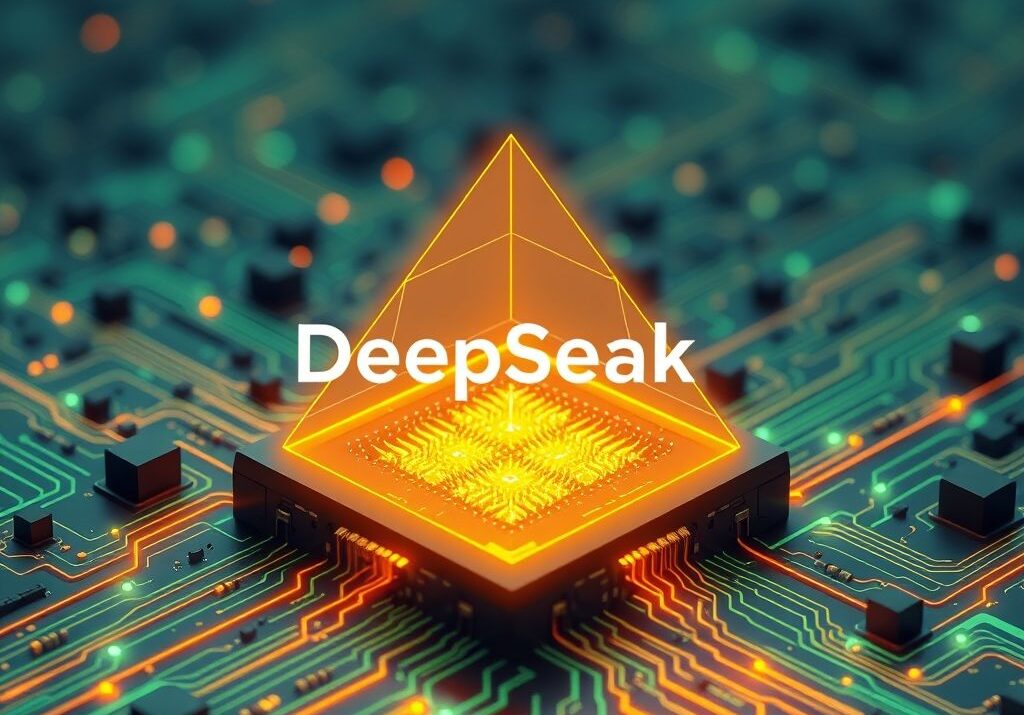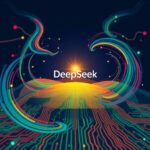Ever felt like the AI race is just a battle of who can spend the most money on the biggest computers? I stumbled upon an interesting article on VentureBeat titled “Rethinking AI: DeepSeek’s Playbook Shakes Up the High-Spend, High-Compute Paradigm,” and it got me thinking – is there another way?
We’ve been led to believe that scaling AI models requires massive investments in compute power. You need mountains of data, specialized hardware, and a team of experts, right? This article suggests that DeepSeek might be changing that narrative. The article highlights how their approach is pushing the boundaries of what’s possible with AI, potentially years ahead of schedule. Now, that’s something worth digging into.
It’s not that DeepSeek invented anything entirely new. More like they’ve optimized and streamlined the AI development process in such a way that others are now taking notice.
This shift could have huge implications, especially for those of us in Cameroon, where access to massive computing resources isn’t always readily available. If DeepSeek’s methods prove scalable, it could democratize AI development, allowing smaller companies and research institutions to compete with the giants. According to a report by Stanford’s AI Index, the cost of training large AI models has been increasing exponentially, making it harder for smaller players to participate. If DeepSeek truly is providing a way to achieve similar results with less resources, this could be a welcomed change for many.
Think about it: More efficient algorithms could lead to:
- Lower development costs: Making AI more accessible.
- Reduced energy consumption: Contributing to a greener future.
- Faster iteration cycles: Accelerating innovation.
- Wider adoption: Bringing the benefits of AI to more industries and communities.
It’s a challenge to the established way of doing things, but it’s also a great opportunity to rethink how we approach AI development. We might be on the cusp of a new era where ingenuity and clever algorithms can outweigh brute force computing power.
Here are 5 key takeaways from DeepSeek’s approach:
- Optimization is Key: Focus on improving algorithms and model architectures to achieve better results with less compute.
- Data Efficiency Matters: Explore techniques like few-shot learning and data augmentation to reduce the need for massive datasets. (According to a paper published by DeepMind, data augmentation can significantly improve model performance with limited data.)
- Collaboration is Crucial: Open-source initiatives and knowledge sharing can accelerate innovation and reduce redundant efforts.
- Focus on Practical Applications: Prioritize developing AI solutions that address real-world problems and deliver tangible value.
- Accessibility is Paramount: Strive to make AI tools and resources available to a wider audience, including researchers, developers, and businesses in developing countries.
What do you think? Is DeepSeek onto something that could reshape the future of AI? I’m eager to hear your thoughts.
FAQ: DeepSeek and the Future of AI
-
What is DeepSeek and why are they important?
DeepSeek is an AI company that’s gaining attention for its approach to AI development, which emphasizes efficiency and optimization over simply throwing more computing power at problems. They’re important because they’re potentially lowering the barrier to entry in the AI field. -
How is DeepSeek challenging the current AI paradigm?
The current AI paradigm often relies on massive datasets and enormous computing resources. DeepSeek is exploring ways to achieve similar results with less, challenging the notion that AI progress is solely dependent on scale. -
What are the potential benefits of DeepSeek’s approach?
Potential benefits include lower development costs, reduced energy consumption, faster innovation, and wider adoption of AI in various industries and regions. -
Can DeepSeek’s methods help smaller companies and researchers?
Yes, DeepSeek’s emphasis on efficiency could level the playing field, allowing smaller players with limited resources to compete with larger organizations. -
How does data efficiency contribute to this new paradigm?
Data efficiency techniques, such as few-shot learning and data augmentation, reduce the need for massive datasets, making AI development more accessible. -
What role does collaboration play in DeepSeek’s vision?
Collaboration and knowledge sharing are crucial for accelerating innovation and avoiding redundant efforts, ultimately benefiting the entire AI community. -
How can DeepSeek’s approach impact developing countries like Cameroon?
By lowering the cost and resource requirements for AI development, DeepSeek’s methods can make AI more accessible to researchers, developers, and businesses in developing countries. -
Are there any risks associated with focusing on optimization over scale?
One potential risk is that optimization alone might not be sufficient to achieve the most advanced AI capabilities, which may still require significant scale. -
Where can I learn more about DeepSeek’s work?
You can follow DeepSeek’s official announcements and publications on their website or through industry news outlets. Also, keep an eye out for research papers from DeepSeek or articles that discuss their work. -
How can I get involved in this new era of AI development?
You can explore data efficiency techniques, contribute to open-source AI projects, focus on practical applications of AI, and advocate for greater accessibility to AI tools and resources.








